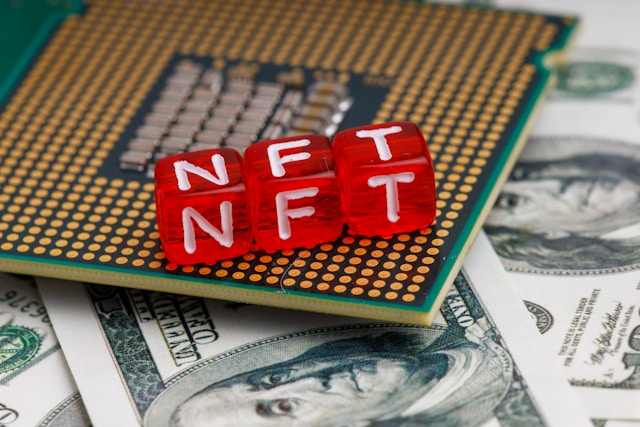
- September 4, 2023
- Personal Finance Advisor
- 0
Are you ready to embark on a thrilling journey to understand the age-old battle of savings vs. investment? This showdown is not your typical gladiator fight, but it’s just as epic in the world of finance. Buckle up because we’re diving deep into the realms of financial strategies, dissecting the pros and cons of saving your hard-earned money and investing it for the future.
The Basics: Savings vs. Investment Unveiled
Savings: The Steady Horse
Savings are like the dependable steed in your financial stable. When you save, you’re setting money aside in safe and easily accessible accounts, such as savings accounts or certificates of deposit (CDs). It’s a low-risk approach, and your money is readily available for emergencies or short-term goals.

However, the drawback is that savings typically offer lower returns due to minimal interest rates. While your money is safe, it might not grow significantly over time.
Investment: The High-Risk, High-Reward Maverick
Investing, on the other hand, is the maverick of wealth-building strategies. When you invest, you put your money into assets like stocks, bonds, real estate, or businesses with the expectation of earning higher returns. Investments can be riskier than savings, but they have the potential for substantial growth.
However, the investment path can be rocky. Markets fluctuate, and there’s no guarantee of returns. Your money is at risk, and you may need to hold onto investments for the long term to weather market volatility.
The Battle of Returns : Savings vs. Investment
Savings: Slow and Steady Wins the Race
In the savings corner, you’re almost certain to see your money grow, albeit at a slow pace. Savings accounts typically offer lower interest rates, but your principal amount remains secure. It’s a safe bet if you’re risk-averse or need funds for short-term goals like an upcoming vacation or emergency expenses.
Investment: The Potential for Prosperity
Investments, on the other hand, have the potential for significant growth. Historically, stock markets have outperformed savings account interest rates over the long term. By investing wisely and diversifying your portfolio, you can harness the power of compound interest and watch your wealth grow.
The Risk Factor : Savings vs. Investment
Savings: The Comfort of Safety
When you choose savings, you’re embracing financial security. Your money is protected, and you can access it whenever you need it. There’s no need to worry about market crashes or economic downturns affecting your savings.
However, the downside is that the safety comes at a price: lower returns. In a world of low-interest rates, your money might not even keep pace with inflation, meaning it loses purchasing power over time.
Investment: The Roller Coaster Ride
Investing, by nature, is riskier. Markets can be unpredictable, and the value of your investments can fluctuate. It takes nerves of steel to withstand market downturns without panicking and selling at a loss.
But here’s the catch: over the long term, investments have historically offered higher returns compared to savings. It’s like riding a financial roller coaster with the potential for thrilling highs but stomach-churning lows.
Time Horizon: The Game Changer
Savings: Short-Term Wins
Savings are your go-to choice for short-term financial goals. If you plan to use your money within the next few years, such as for a down payment on a house or an emergency fund, savings accounts are your best friend. They keep your money safe and easily accessible when you need it.
Investment: The Long Game
Investments shine when you have a long time horizon. If you’re thinking about retirement, your children’s education, or building substantial wealth, investing is your ticket to the big leagues. It’s a marathon, not a sprint, and it requires patience to ride out market volatility.
Diversification: The Art of Balance
Savings: Limited Growth Potential
Savings are simple to manage but have limited growth potential. Your money is sitting in an account with a fixed interest rate, which may not even keep up with inflation.
Investment: Spreading Your Bets
Investments allow you to diversify your portfolio. By spreading your investments across various assets, you can manage risk and potentially enjoy higher returns. Diversification is like having multiple arrows in your quiver, increasing your chances of hitting the bullseye.
Taxes: The Hidden Player
Savings: Taxable Interest
Interest earned on savings accounts is typically taxable, meaning you’ll owe a portion of your earnings to the taxman. While it’s not the end of the world, it can eat into your returns.
Investment: Tax-Efficient Options
Investors have access to tax-efficient accounts like 401(k)s and IRAs, which offer tax advantages. By optimizing your investment strategy within these accounts, you can reduce your tax burden and potentially grow your wealth more efficiently.
Liquidity: Accessing Your Money
Savings: Immediate Access
Savings accounts provide immediate access to your funds. In emergencies or when you need cash quickly, your savings are there to bail you out.
Investment: The Waiting Game
Investments may not offer the same level of liquidity. Selling assets like stocks or real estate can take time, and you might need to wait for the right market conditions to get the best value.
Inflation: The Silent Wealth Eroder
Savings: Vulnerable to Inflation
Savings can fall prey to inflation’s stealthy erosion. If your savings don’t earn enough interest to outpace inflation, the purchasing power of your money diminishes over time.
Investment: A Hedge Against Inflation
Investments have the potential to outpace inflation. Historically, assets like stocks and real estate have offered returns that exceed the rate of inflation, helping you preserve and grow your wealth.
FAQs – Savings vs. Investment
FAQ 1: What Are Savings and Investment?
Savings refer to the money you set aside in safe and easily accessible accounts, like savings accounts or CDs. These are low-risk options, ideal for short-term goals and emergencies. On the other hand, investment involves putting your money into assets like stocks, bonds, real estate, or businesses with the aim of earning higher returns. Investments can be riskier but offer the potential for substantial growth over time.
FAQ 2: What Are the Key Differences Between Savings and Investment?
The primary difference lies in risk and returns. Savings are low-risk, with lower returns, while investments carry more risk but offer the potential for higher returns. Savings are ideal for short-term goals and emergencies, while investments are best for long-term wealth building.
FAQ 3: How Do I Decide Between Savings and Investment?
Your choice should align with your financial goals, risk tolerance, and time horizon. If you have short-term needs or are risk-averse, prioritize savings. For long-term wealth growth, consider investment, but be prepared for market volatility.
FAQ 4: Can I Combine Savings and Investment?
Absolutely! A balanced approach often yields the best results. Maintain an emergency savings fund for immediate needs while investing for long-term goals. This way, you secure your financial present and build wealth for the future.
FAQ 5: What Factors Affect Returns in Savings and Investment?
Returns in savings are influenced by interest rates, which are typically lower. Investment returns depend on market performance, asset selection, and time in the market. Diversification and patience play crucial roles in investment returns.
FAQ 6: How Does Liquidity Differ Between Savings and Investment?
Savings offer immediate liquidity, allowing you to access your funds anytime. Investments may require time to sell assets, potentially delaying access to your money.
FAQ 7: What Role Does Inflation Play in Savings and Investment?
Inflation erodes the purchasing power of money. Savings accounts with low-interest rates may not keep up with inflation, causing your money’s value to decrease over time. Investments like stocks and real estate can help hedge against inflation by offering returns that outpace it.
The Ultimate Decision: A Balanced Approach
In the epic showdown of savings vs. investment, there’s no clear winner. The right choice depends on your financial goals, risk tolerance, and time horizon. Most importantly, a balanced approach can provide the best of both worlds.
Consider maintaining an emergency savings fund for immediate needs while allocating a portion of your funds to investments for long-term growth. By striking a balance between savings and investment, you can secure your financial present and build wealth for your future.
So, what’s the verdict? It’s not about choosing one over the other; it’s about finding harmony between the two to achieve financial success. Your journey to wealth begins with a well-thought-out strategy that combines the stability of savings with the growth potential of investments. Get started today, and your financial future will thank you tomorrow.




















































